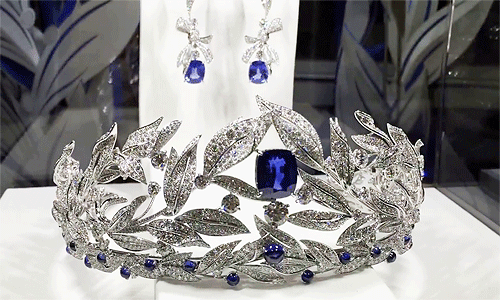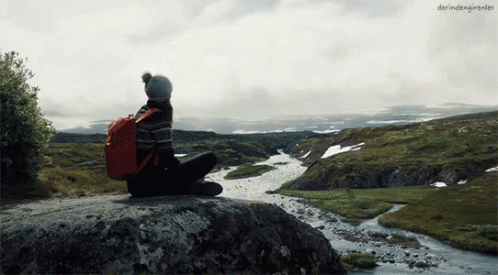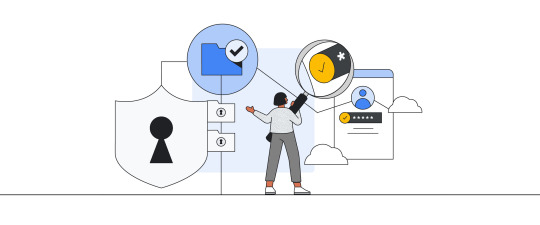Don't wanna be here? Send us removal request.
Text
Luxury Redefined: Why a $5,000 Handbag Spells Luxury, But a $5,000 Ski Setup Doesn't
In the minds of many, the word "luxury" is almost automatically associated with things like premium leather goods, Swiss timepieces, and haute couture fashion. A $5,000 handbag from an esteemed French atelier? Definitely a luxury item. But what about a $5,000 pair of high-end skis with top-of-the-line bindings? Or a $2,000 mountaineering backpack made of weather-proof fabrics? For some reason, costly outdoor gear doesn't quite register as "luxury" in the general consciousness.

Luxury implies the cost of a product is far higher than its functional value. So, what accounts for outdoor gear being separated from traditional luxury products in most people's minds? From my point of view a few potential factors:
Necessity vs. Extravagance: While no one truly needs a $60,000 Hermes Kelly bag or a $25,000 Rolex watch, such items are considered non-essential luxuries and symbols of status. Outdoor equipment like skis, on the other hand, is often viewed as functional gear. Even if very expensive, skis are viewed as essential equipment for skiing rather than just a status symbol.
Utility vs. Appearance: Luxury fashion items like purses and jewelry are valued mainly for how they look - their fancy materials, expert craftsmanship, and serving as a trendy accessory. But outdoor gear's main selling point is its usefulness and performance, not just appearance.
Heritage & Exclusivity: Many luxury brands have centuries of heritage and tightly controlled exclusive production methods. In contrast, most outdoor gear is produced at a larger scale and sold across many retail channels rather than ultra-exclusive boutiques. This relatively broader accessibility prevents it from having that prestigious luxury brand feel.
Craftsmanship Perceptions: The artistry of a Hermès Birkin bag - hand-stitched, hand-dyed leathers and exotic skins - is incredibly difficult to mass produce. Outdoor gear relies more on advanced manufacturing techniques and materials science, which while impressive, don't have that same sense of traditional luxury craftsmanship in most consumers' minds.
For me, this leads to an interesting question - why haven't certain sporting/outdoor segments been disrupted by ultra-luxury brands like we've seen in other categories? You'd think a ski company could charge $10,000 for a special line of skis made with fancy materials and only make a small number of them. Things like golf clubs, hunting gear, and camping cookware also seem like they could be branded and priced as luxury items, even if they're mainly for practical use. Maybe those kinds of luxury outdoor products will become more common in the future.
At the end of the day, most people view luxury as more about accessories you wear or use for status, not technical performance gear for actual activities like skiing, biking, or mountain climbing. No matter how expensive or advanced that outdoor equipment is, most consumers associate luxury more with indulgent fashion items rather than functional sporting goods. Changing what people consider a true "luxury" product may require rethinking bigger cultural definitions of luxury overall.

2 notes
·
View notes
Text
Is it all in the perception?
As someone who grew up around the vineyards of Catalonia, Spain, I've always felt a special connection to our local wines. There's something special about enjoying a glass sourced from the very soil you're standing on, you know? We Spaniards can admittedly be a bit biased towards these homegrown bottles.
But after digging into this case study on the Chilean winery Concha y Toro, I started questioning if we wine lovers get too caught up in branding and romance over actual quality. How much does perception really shape what we define as a "good" wine?
If you haven't heard about the Judgment of Paris, look into this iconic event. It was a legendary blind taste test in 1976 that dramatically reshaped perceptions in the wine world. During the "Judgment of Paris," even elite French judges were unable to distinguish affordable California wines from their prestigious French counterparts when tasting blind. Preconceived notions shattered!

Then, in 2004, at the "Berlin Tasting," Chilean wines like those from Concha y Toro were ranked among the world's best by elite palates when judged blind against pricey French and Italian bottles—mind-blowing stuff.
So it makes me wonder - how much of our revered opinion on what constitutes a "great" wine is really just us getting psyched out by clever storytelling that convinces us a bottle must be amazing because of where it's from and the tale spun around it?
Don't get me wrong; I'll always instinctively reach for a Spanish wine first just out of regional pride. But this case study opened my eyes to just how much of a mind game the wine world can be. I'd love to hear your thoughts! In the wine world, does perception or quality reign supreme?
1 note
·
View note
Text
Embracing the Power of Experimentation
I've learned the hard way that innovation and real progress rarely come from guesswork alone. J.C. Penney's struggles served as a reminder of the pitfalls of disregarding this principle.
About a decade ago, when I was working on my UX Master's thesis, my team got hired to re-design the customer experience for a major back-to-school supplies retailer in Spain. They had 48 stores across the Catalonia region, at the time.
Before we even started, the company had already decided to change pricing on certain products for their big back-to-school sales push. Their plan was to use the classic "9-ending pricing" tactic to increase profit margins. But their numbers showed it wasn't really paying off like they hoped.

So, we tried a different approach. We wanted hard data on how various pricing models actually impacted sales. We set up this experiment where we'd change the price on one specific product every single day but at a different store location each time. That let us systematically run tests comparing 9-ending pricing against alternatives like simple round number prices or xx.25 cent endings.
Looking back, we made some key mistakes in how we ran the experiment. But the biggest one was not getting upfront agreement from the decision makers that they would actually implement the results - even if the data contradicted the pricing strategy they'd already decided on.
Looking back, I can assure you that lack of buy-in came back to bite us hard. Once the results came in, showing that 25-cent endings consistently drove way higher sales than 9-ending prices, we had an incredibly tough time getting buy-in from the stakeholders on using those findings. It took weeks of pushing the compelling data before they finally came around.
In the end, we did convince them to overhaul the pricing model for one of their top product based on what the experiments uncovered. And it paid off big time.
That experience really drove home the importance of two things:
Having the discipline to properly experiment and let data drive your decisions, not guesswork.
But just as crucial - getting organizational commitment upfront to actually implement the results, especially when they challenge long-held assumptions.
Experimentation is incredibly powerful, but it's useless if you can't get people to embrace what the data tells you, even when it goes against conventional wisdom. Those two elements have to be balanced for real impact.
So, while my team's little pricing project may seem pretty minor in the grand scheme, it was an eye-opening lesson about the value of data-driven experimentation. But it also underscored how hard it can be to get an organization dialed into actually following through on that approach when it means departing from familiar strategies. Mastering that balance is low-key what separates the innovators from the J.C. Penneys of the world.
1 note
·
View note
Text
Trust's Role in the Cybersecurity Customer Journey
As a product specialist in the cybersecurity space, I've realized that nailing the customer journey is not just crucial but extremely difficult. Building trust has to happen before any awareness or value can be delivered - adding extra complexity to the traditional customer journey.
For these highly sensitive products where you're asking customers to share their most confidential data and system access, there's an inherent skepticism toward unproven vendors. The entire journey needs to be mapped from the ground up to cultivate trust at every single touchpoint.

Some key ways I think cybersecurity startups can use journey mapping to improve the experience:
From the start, be radically transparent about the product’s exact capabilities and limitations. Don’t overpromise on solving vague “security”—clearly define the specific risks addressed.
Provide robust documentation, communities, and open lines of communication for research. Make it easy for skeptical customers to examine how the technology actually works.
Showcase the founding team's expertise in painfully authentic ways. Don't just list credentials - help customers understand the mission driving the company.
Most importantly, don't take shortcuts or try hacking traditional growth tactics. The "time to trust" journey necessitates overcompensating with trustworthy actions and proof at every painful step. There are no cutting corners when it comes to earning confidence.
Overall, I've reached an important realization - building successful cybersecurity products requires flipping the traditional customer journey model. An extremely intentional, transparent, and trust-centric approach is crucial for overcoming the industry's justifiably high barriers to adoption.
3 notes
·
View notes